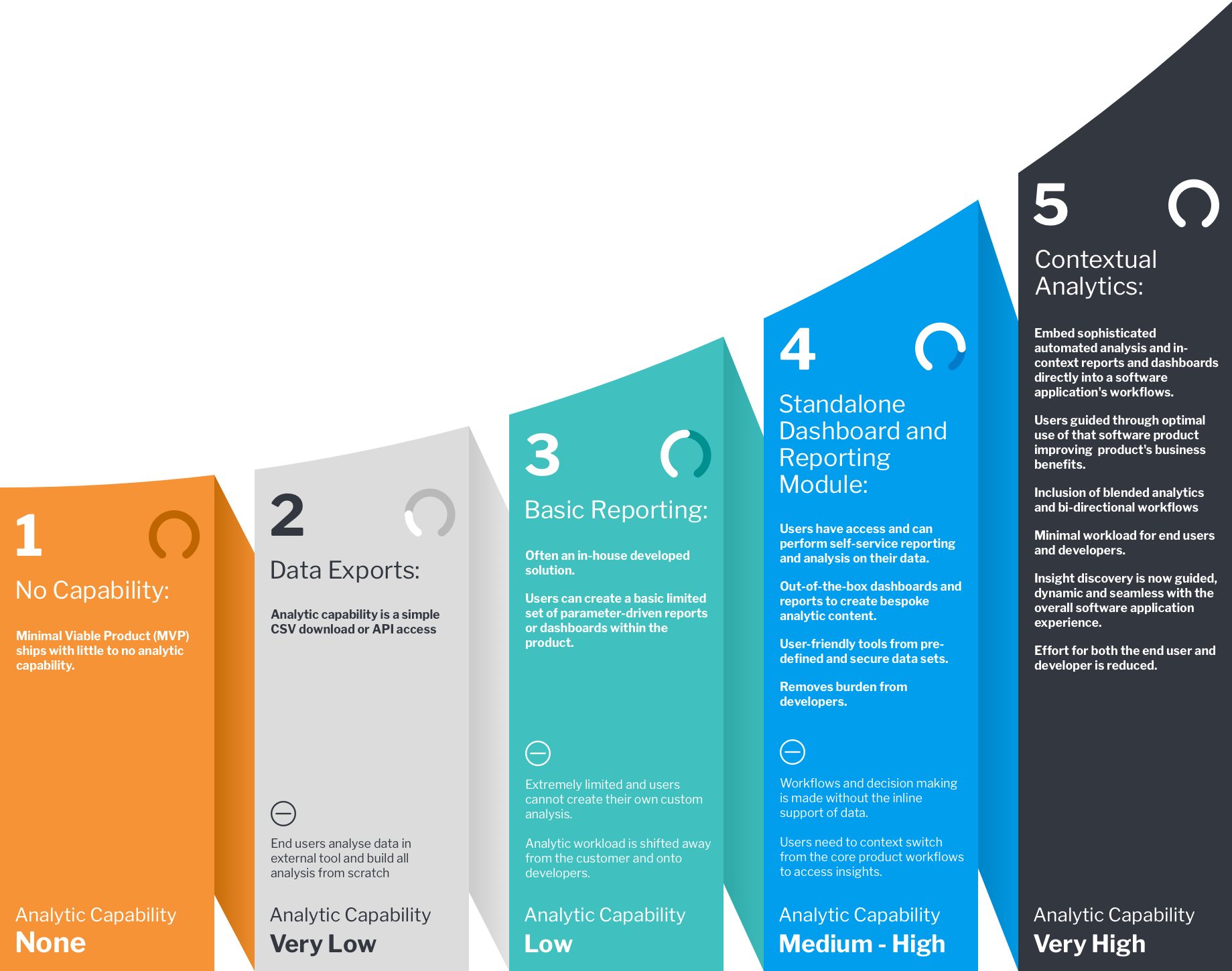Glossary
Contextual Analytics
What is Contextual Analytics?
Contextual analytics refers to an analytical solution that is embedded directly into an application’s core workflows. It provides the benefits and capabilities of analytical tools such as automated business monitoring, dashboards, and data visualization to software users, right at the point of their daily work and within the situational framework where decisions must be made. Because analytics is natively part of the software product’s core workflows, critical data and relevant insights can be seamlessly delivered to users to support analysis and decision-making.
With contextual analytics, core analytical components like charts, metrics and tables sit side by side on the screen with an application’s transactional components to enable bidirectional communication. Through this tight integration, users gain instantly contextualized and personalized data with a few clicks, and are now proactively guided by the software product toward relevant insights and potential opportunities to act.
Contextual analytics ultimately aims to support new context and opportunities for action and enables a variety of business opportunities. Retail store managers can instantly access daily demand forecasts and be presented with the option of creating shift schedules for next week, inventory managers can view trends, analyze stock and replenish orders without exiting the screen, while sectors that utilize processes involving routine data processing – finance, logistics, manufacturing, marketing or sales – can leverage automated alerts, prompts and insights.
Download White Paper
Contextual Analytics vs Embedded Analytics: What is the difference?
As the next evolution of embedded analytics, contextual analytics addresses several limitations of the traditional embedded BI model. Historically, embedded analytics integrates dashboards and reporting as standalone modules in an application, which means users can leverage self-service BI tools in the software they use for their daily work but have to switch away from their transactional environment whenever they need to investigate data or derive insight to guide decisions. This is also a highly manual process which is subject to data fatigue or human error.
Contextual analytics goes a step further by providing automated and filtered insights to users while they use their application as normal, with the aim of assisting them to act on relevant anomalies, changes and trends in their data they may not find through manual exploration. Because analytics is now deeply integrated with the core workflow of the software, users also no longer have to exit their standard workflow to look outside of the application and use analytical tools or search for additional data – it’s all provided to them within the software.
Contextual analytics is ultimately about guided, dynamic insights that integrate into your app user’s workflow. They don’t have to go elsewhere and switch context anymore for the information they need right there and then. It empowers all users to be more effective in their work, by augmenting their analysis capability whilst transacting in your software application.
How to get started with Contextual Analytics
Contextual analytics, when embedded into your application’s workflows, can be a huge boost to the usability and value of your software. However, adopting this form of analytics requires an understanding of your application’s analytics maturity to guide your upgrade strategy. To help guide you on your journey, we recommend reading our guide on Understanding the Embedded Analytics Maturity Curve to understand where your product needs to address its analytical maturity and developmental opportunities before pursuing contextual analytics as a capability.

Embedded Analytics Maturity Curve (Detailed)